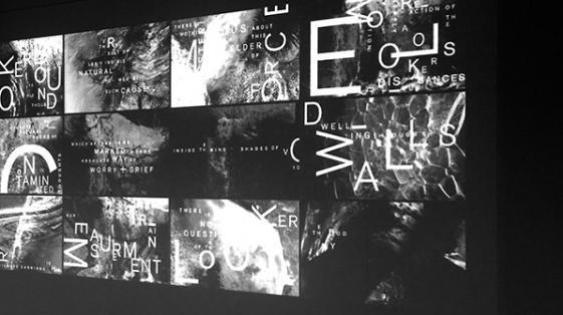The Looker Bound
Many contemporary practices in graphic design originate in the work of avant-garde artists of the 20th century. Color and form dominate; poetry is reflected in everything these artists did. As visual communicators, we need to demonstrate to readers and viewers that poetry is not only present in literature but also in the visual arts. Contemporary art and design are poetry in visual form.
My masters project is based on the idea that any narrative requires the reader’s participation. It describes the importance of time, and is a visual narrative reminding readers to remember that during periods of grief and worry, better, less stressful times will surely follow.
The project incorporates simple, concrete photographs which process until they lose meaning, producing new imagery that’s emotive, textural, energetic, and highly abstracted. Like poetic language, these images are rich and become more powerful in combination. I borrowed equally from the abstract language of Surrealism; from the repetitive, nervous overtones of Futurism; and from the collaged type of early Dadaist art. Poetic in image and language: writing and producing my own unique images, that’s “the making”—that’s poetry.
Poesia is Greek for poetry, meaning “to make.” Over time, humans have created thousands of language systems to aid understanding and communication. Modern poetry breaks away from these established systems. I believe that poetry is the highest creative form of all literary styles, and that it should be recognized and appreciated by designers.
My interest in the avant-garde stems from an interest in contemporary practices in graphic design, which originated in the work of Modern artists a century ago. Modernism “lit the match” in many areas of design.
As visual communicators, designers need to be able to appreciate both the art of words and art itself. I think that good designers are those who create visually interesting compositions, but that great designers are those who do the same in concert with language. Graphic design mastery does not limit itself to what’s already established, but breaks rules by effectively synthesizing uncommon language and form. Poetry, as both language and form, creates a link between audience and message.
I consider myself not only a designer, but also an artist and poet. To me, art is personal and aspirational, while design is purposeful and accessible to all. As both a written and spoken language, poetry provides a rich vehicle for graphic designers to respond to through typography, imagery, and symbolism. When art, graphic design, and poetry overlap, new forms of understanding are introduced.

